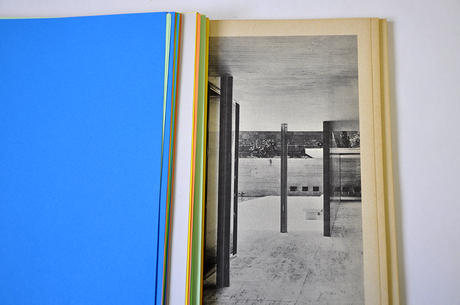Julie Rafalski
Posters, Books and Postcards

Improvisations, slide projection, 2014
An art reproduction - in a book, as a postcard or as a poster - is flat, small, light, portable, immediate, personal, dispensable, carefree. The work it represents is locked away in a museum that can be only seen at certain times, in certain cities, and even then, at a distance of no less than 1 foot.
The art reproduction is cheap, the artwork expensive. The reproduction can be recycled, the artwork cannot.
The artwork, especially if it is owned by a museum cannot be scribbled on, folded, tucked away in a novel, pinned to the wall, lost in a pile of papers, blown away in a blizzard, hidden at the bottom of a bag, thrown into the sea or cut up and its pieces rearranged. Whereas a reproduction can.
The reproduction speaks of something which is not present. It plays either to our memory of a piece if we have seen it, or to our imagination if we haven't seen it. It is something that we can always keep looking at, projecting onto it our memories or desires.
The artwork is conserved and care is taken to ensure that it remains the same as on the day it was made, the reproduction isn't afraid to show fraying, yellowness or the passage of time.
The reproduction shrinks artworks down, laughs at them sometimes, makes them more human. It has noting to loose.
